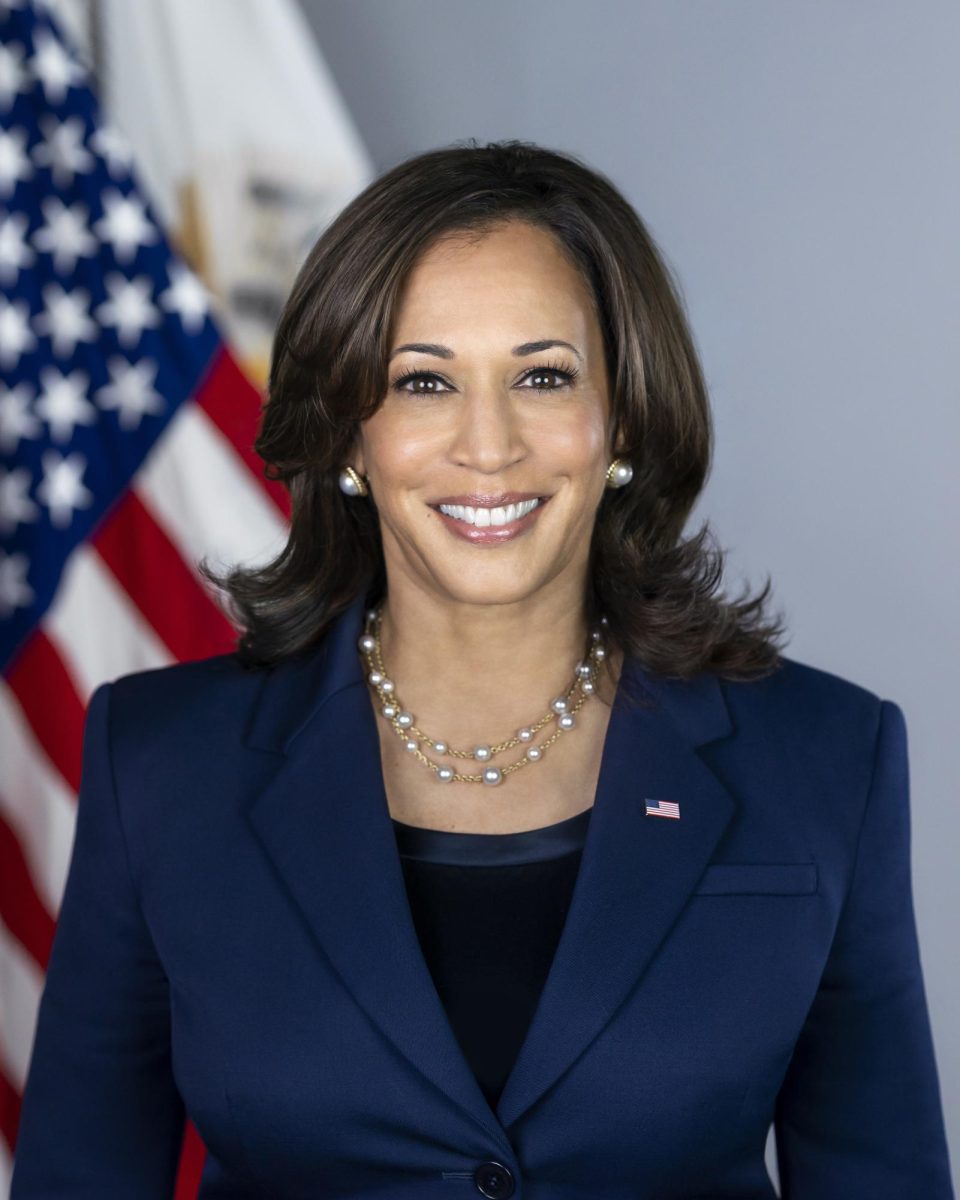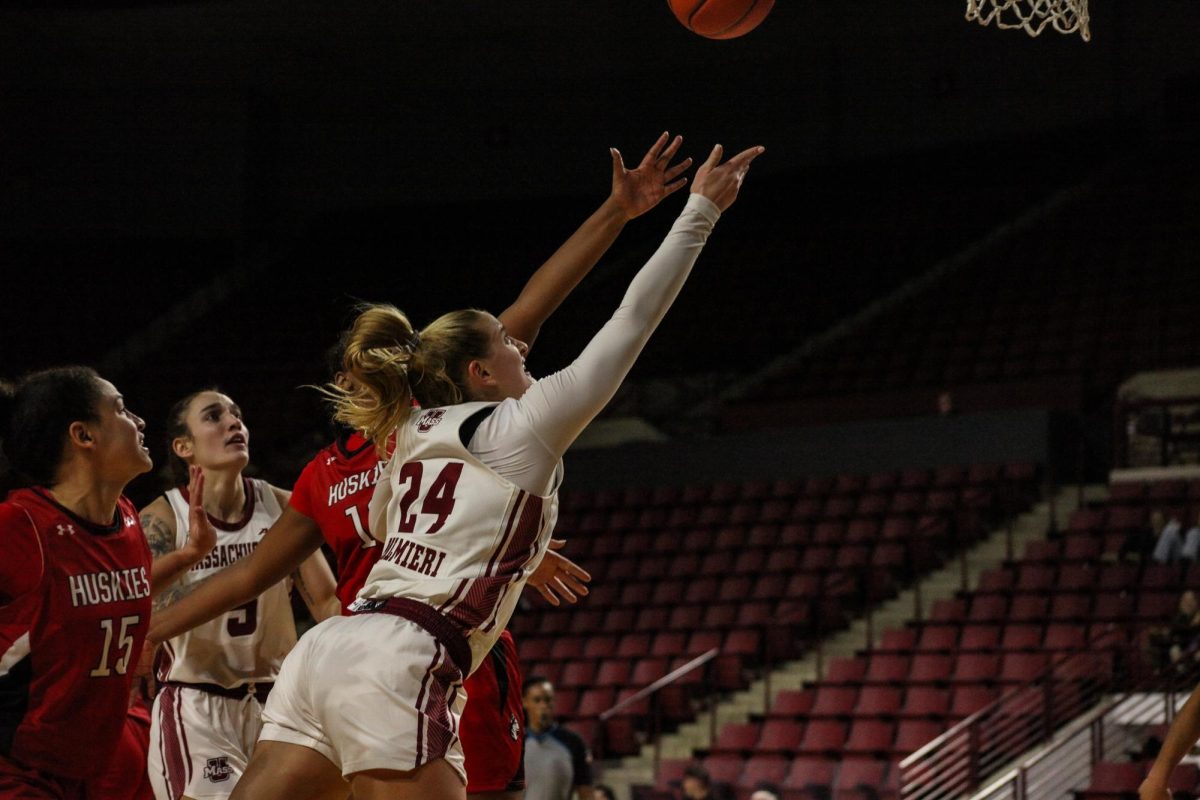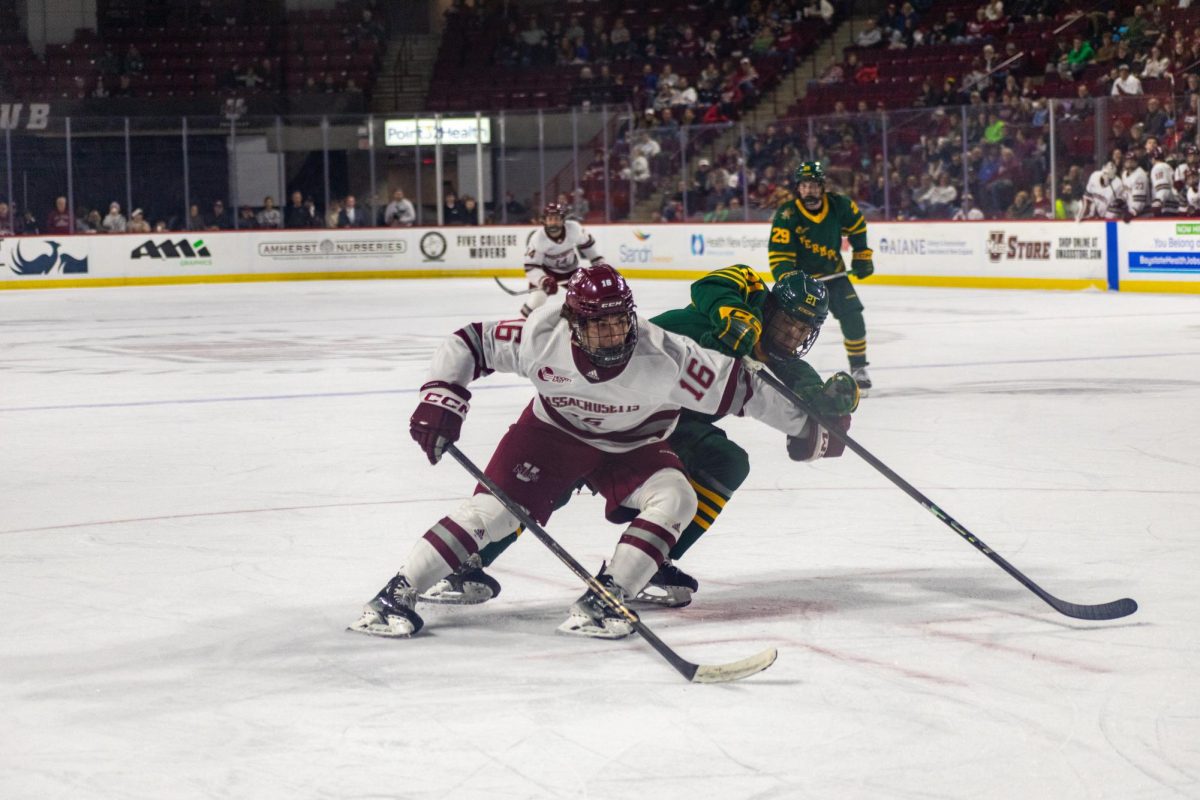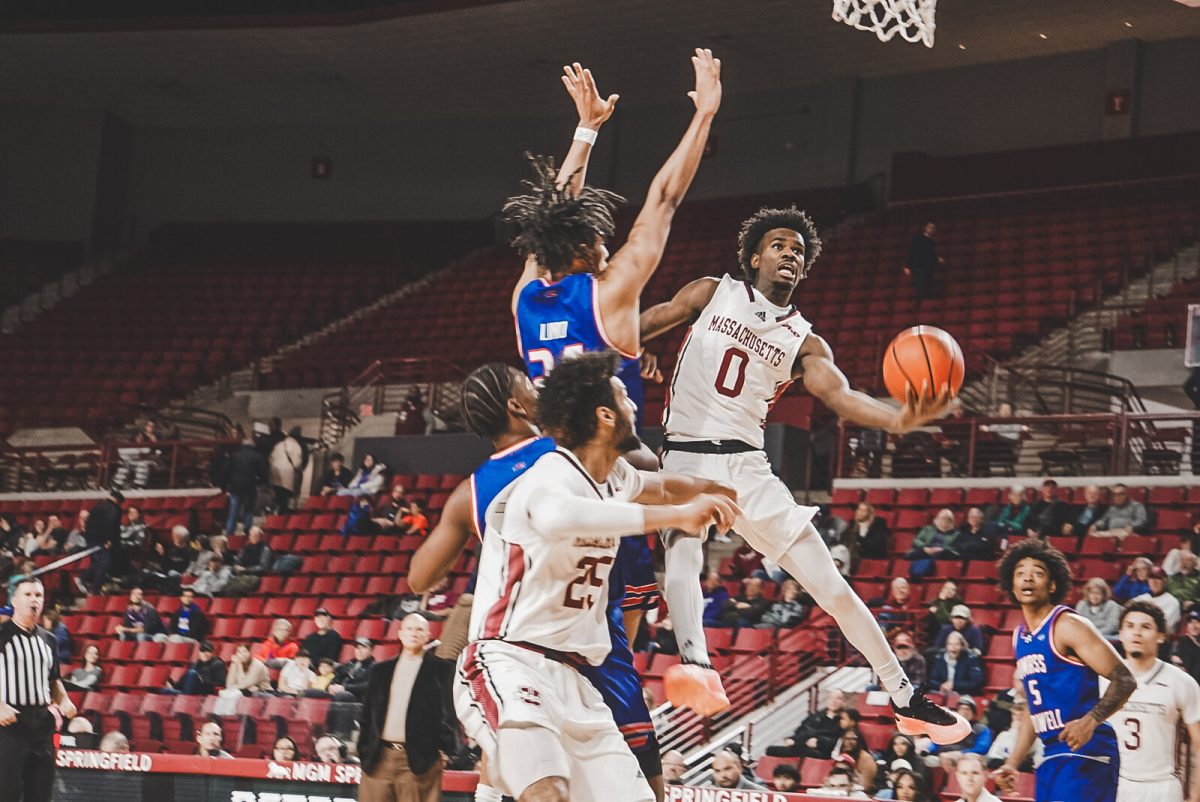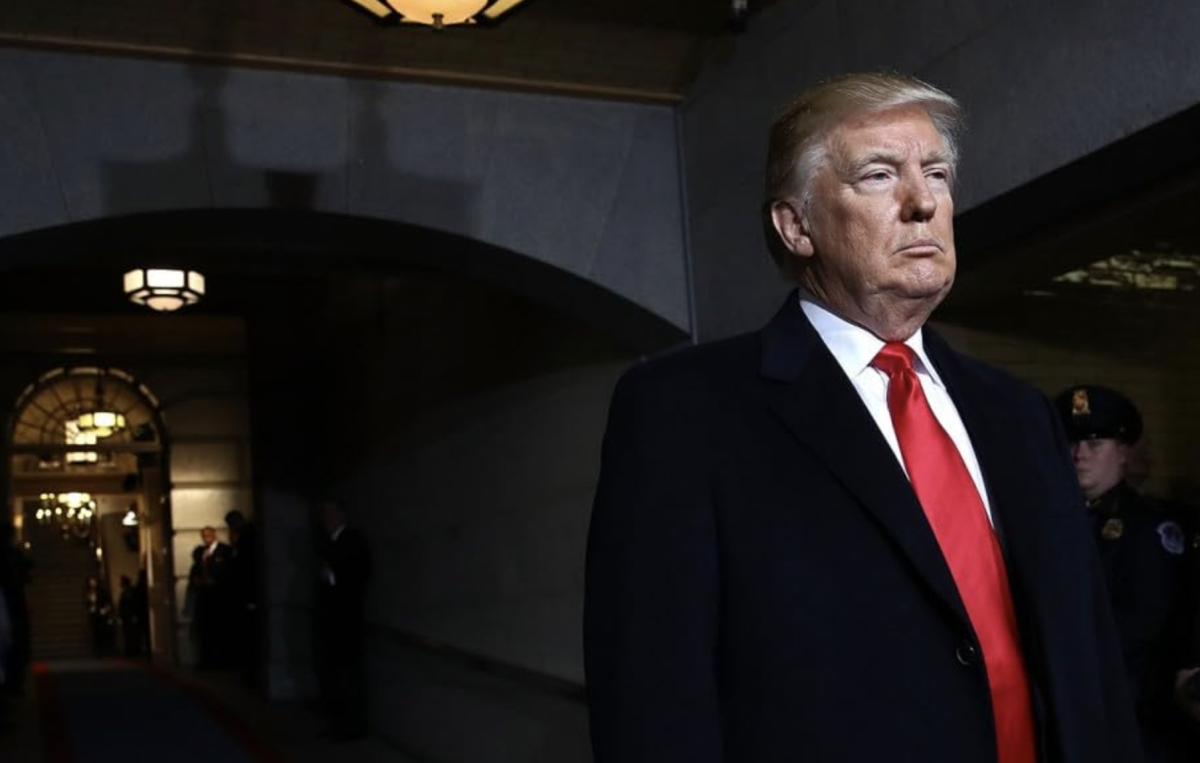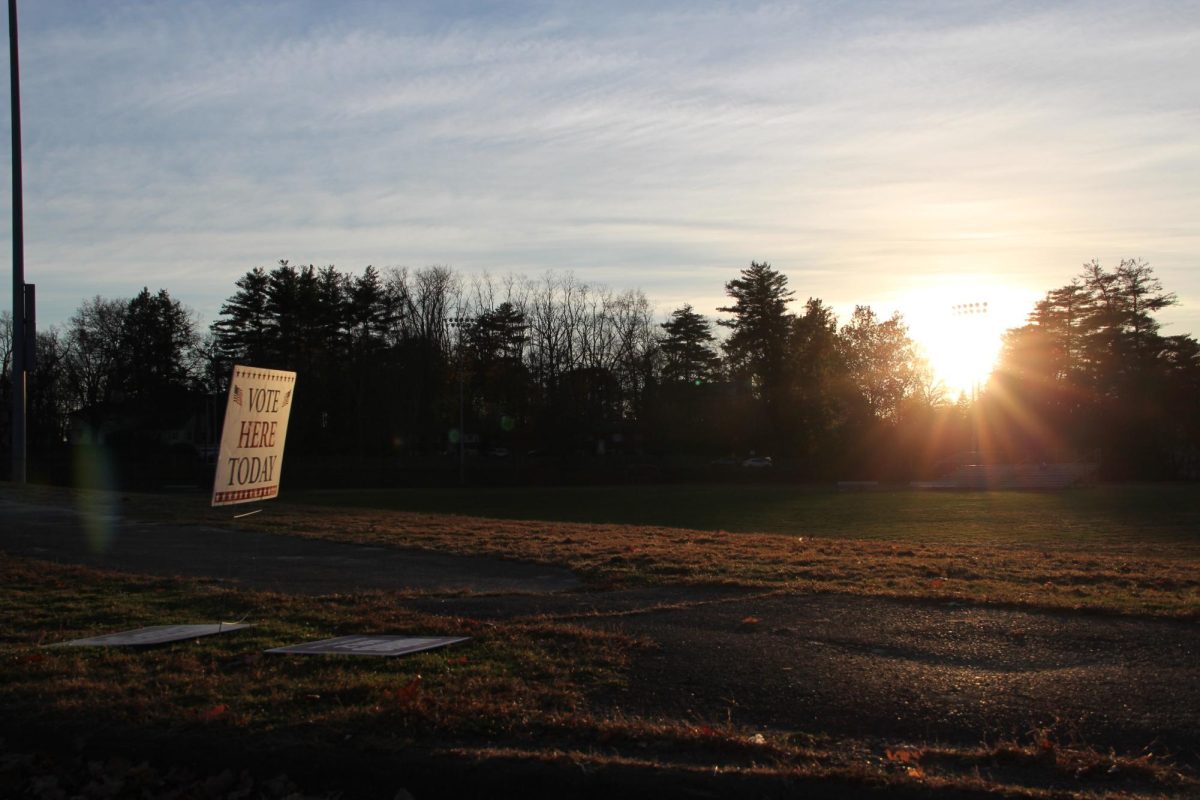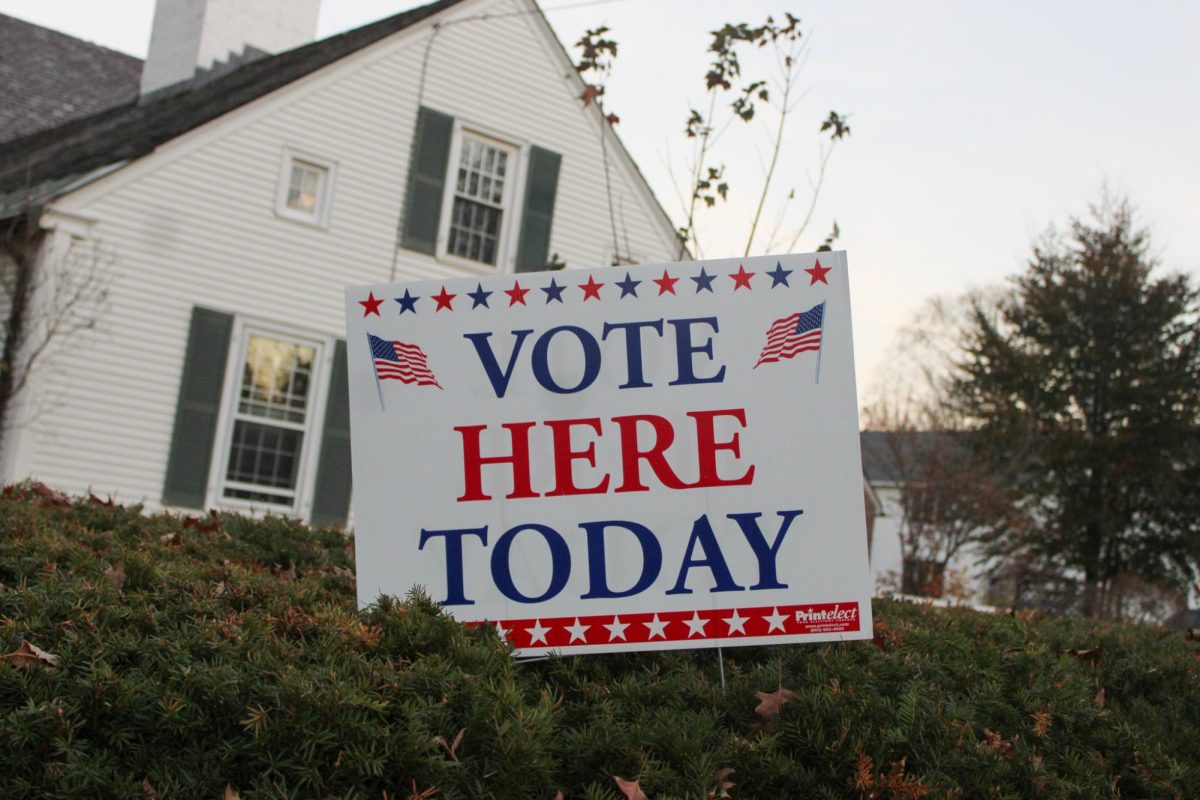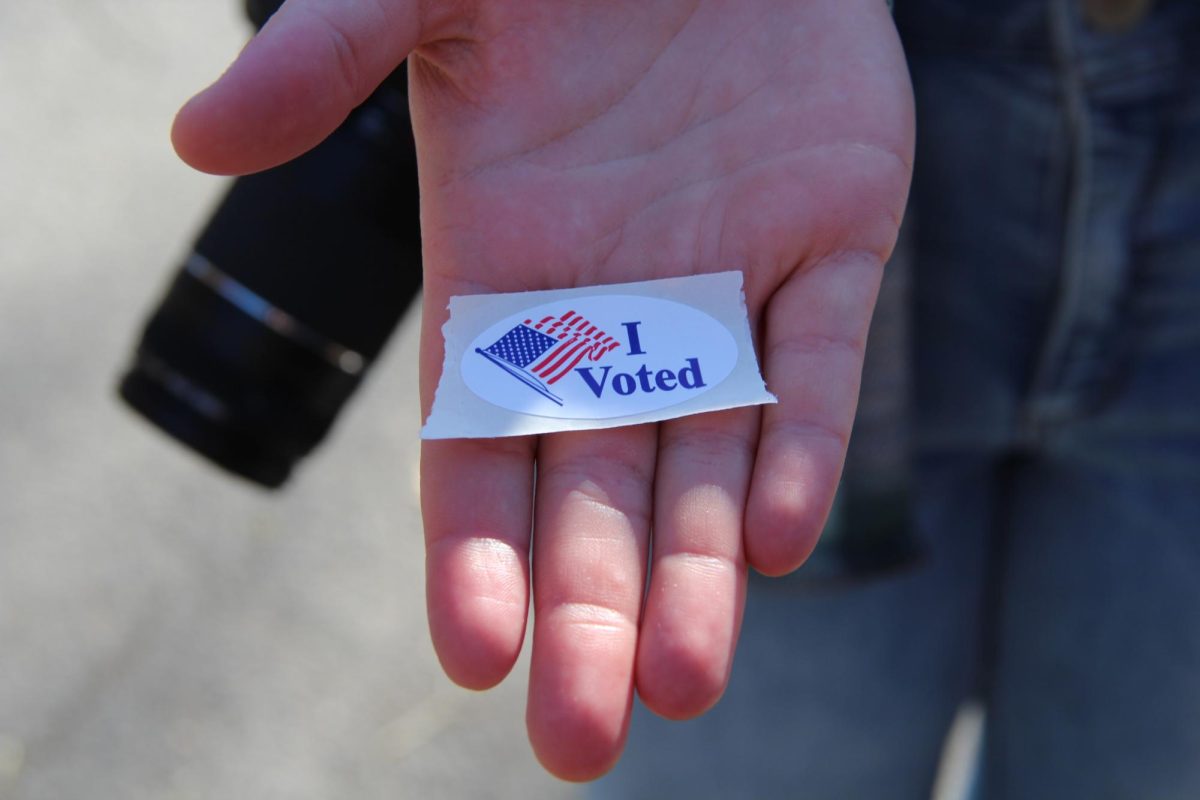Half a year ago, many were bracing for another presidential race between former President Donald Trump and Joe Biden. A number of UMass Amherst students expressed dissatisfaction with both candidates, feeling like their votes would have little impact in a majority blue state.
That changed this summer when President Biden dropped out of the 2024 campaign and Vice President Kamala Harris rose to be the Democratic candidate.
As the 2024 election draws near, Harris’s viral moments on social media have reshaped public opinion, signaling a shift from the dynamics of 2020. UMass students and professors weighed in on this evolving political landscape.
Harris’s image has been shaped by the way she is portrayed on social media. Her image started to shift when a speech she gave in May 2023 resurfaced on TikTok early in her campaign.
Harris was sharing something her mother used to say to her and her siblings, “You think you just fell out of a coconut tree? You exist in the context of all in which you live and what came before you.”
TikTok users found the “coconut tree” comment hilarious and latched onto it, producing video edits of Harris’s speech that quickly racked up millions of views.
Harris was even dubbed “brat” by TikTok, inspired by Charli XCX’s brat summer, and Kamala HQ started embracing these trends in their own advertising. Videos like these have drawn more attention to Harris from the younger generation.
UMass communications Professor Weiai Xu pointed out that the Harris campaign is the top spender for digital advertising, and explained that even though TikTok is the most popular social media platform right now, “…what’s popular on TikTok does not necessarily translate into the virality, in the reality on the ground.”
Xu says his research shows social media platforms other than TikTok that used to be more popular, like Twitter, have changed drastically since 2020.
Xu further described the far right as having its “own kind of ecosystems of influencers of this widespread distrust of mainstream medias and institutions, which allow this group to grow independently and become echo chambers.”
UMass communications Professor Erica Scharrer noted that a lot of people already know exactly how they’re going to vote, so they may not be as affected by these trends.
“For some people, it doesn’t matter what’s going viral, right?” Scharrer said.
“How are questions of virality landing in [swing states] that are so close on the cusp of which way they’re [going to] go? That’s the million dollar question,” Scharrer said.
Scharrer noted, “Even though it’s true that 18 to 25-year-olds are less likely to vote than older audiences, they’re more likely to vote than they have been in the past.”
AJ Rubel, sophomore political science student at UMass, says Harris’s memes are a great way to reach out to young people in general.
“I find it funny, there’s probably a lot of people my age [finding] it funny, and I think it’s smart for her campaign,” Rubel said, “I feel more relatable to it than I do to like, Trump’s campaign.”
In contrast to Harris’s campaign, Rubel described Trump’s social media campaign as “a lot of fearmongering” and pointed out that Trump uses his own private social media platform, Truth Social, for a lot of content, which does not reach far outside the very devoted community.
“Trump will just talk himself like, no filter, no advisors. It’s definitely very unprecedented,” said Rubel.
Emmi Caunitis, a physics major, said she was nervous about the high tensions the race between Trump and Biden was foreshadowing. Now that Harris took over in Biden’s place, she says she feels much more stability, communication and respect in terms of the race.
Caunitis noted that social media has made the election more digestible for young people. “Certain parts of the memes, like, they all held truth,” she said. “They had certain policies that a lot of people, like college students, definitely believe in.”
When the presidential race was beginning in December, Biden was receiving a lot of criticism, explained Scharrer, “I think a lot of Democrats were worried about his viability as a candidate, even though, historically, there’s usually quite a big incumbent advantage.”
In July, after Biden dropped out and Harris entered, people were still not entirely familiar with her character and policies.
But over the past few months, Harris has become more of a “familiar” persona, said Scharrer.
New voting trends could be tied to social media, as younger people are more likely to use social media and rely on it for their news. According to Pew Research Center, “Two-thirds of teens report using TikTok, followed by roughly [60 percent] who say they use Instagram.”
Xu highlighted another perspective: that the Harris campaign’s focus on social media and younger voters may be causing people to overlook the importance of swing voters, such as ethnic minorities.
“This election, it might be about younger voter turnout,” Xu said. “It might also be about the mobilizations of ethnic minorities. This is especially in the swing states.”
Xu emphasized that smaller, marginalized communities are “playing vital keys in this election,” and pointed out that political discourse is unfolding not just on TikTok but also on smaller platforms, such as Telegram, that may go unnoticed by mainstream media.
After Biden’s drop from the election, the democratic campaign has momentum and a renewed sense of energy with Harris’s strategies, bringing a different dynamic to the race.
“Harris has really infused some excitement into the race and some freshness into the race,” Scharrer said. “And I just think she’s brought a lot of new energy, new ideas and [is] kind of mixing things up.”

